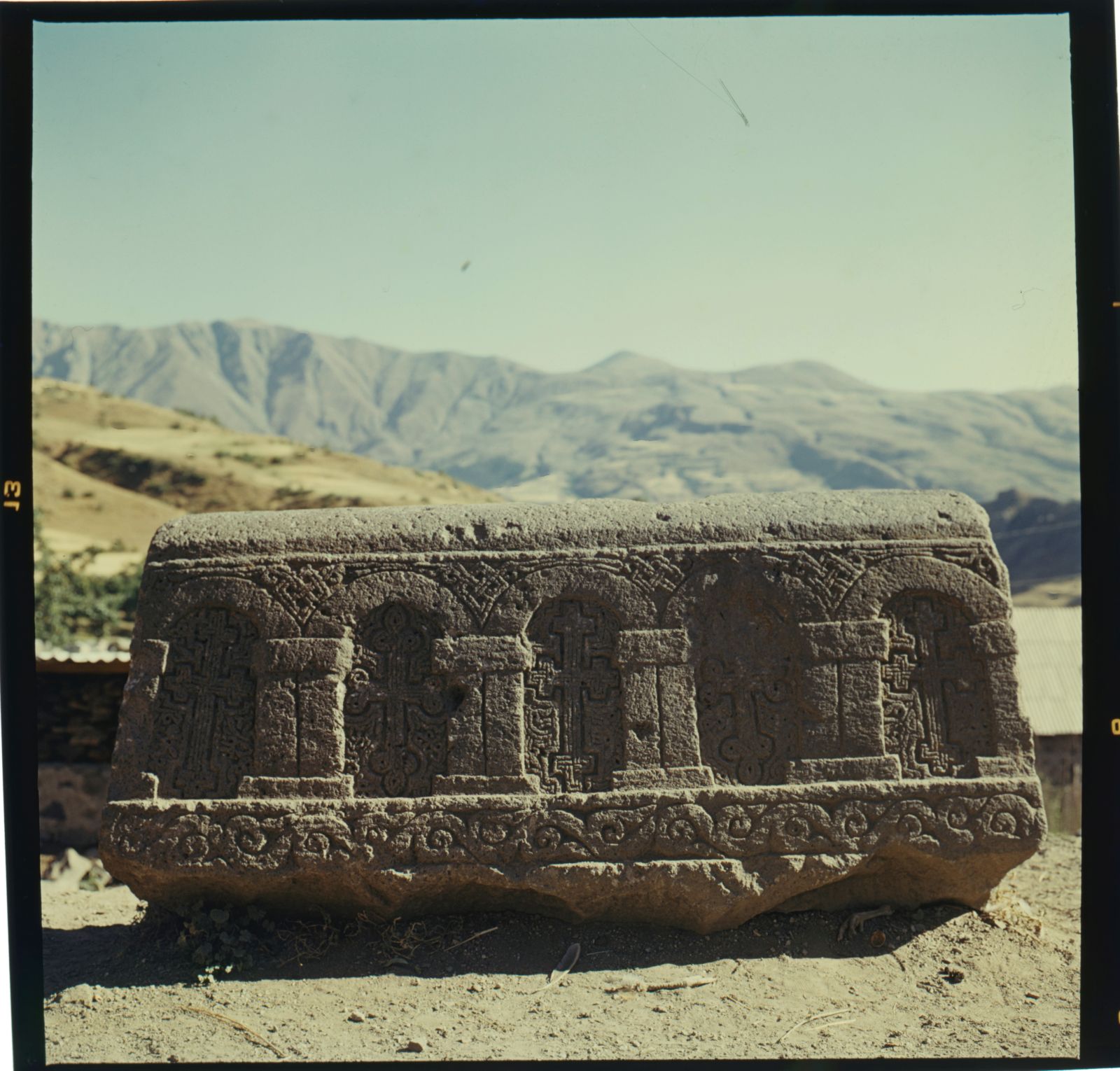Research
OSCOP – Observing South Caucasus’ Historical Landscape: An Open Photo Archive
Stefano Riccioni, Gerhard Wolf and Annette Hoffmann in collaboration with Francesca Penoni and Beatrice Spampinato
Università Ca’ Foscari di Venezia – Centro Studi e Documentazione della Cultura Armena – Kunsthistorisches Institut in Florenz - Max-Planck-Institut

Transparency of a carved stone from Arates Monastery, Armenia. © Centro Studi e Documentazione della Cultura Armena
The OSCOP project aims to critically recover the collection of photographs on the cultural heritage of the South Caucasus taken in the Soviet period by scholars working at the Centro Studi e Documentazione della Cultura Armena, founded in Milan by Adriano Alpago Novello in 1976. Since 1969, Alpago Novello has led several research missions in Armenia, Georgia, Iran, Syria, and Turkey and organized the documentation collected during these excursions, giving birth to a wide range of important publications on medieval architecture of the South Caucasus. In 1992, the CSDCA moved its official headquarters from Milan to Venice, to the Loggia del Temanza, the current location of the photographic archive.
Making the photographic collection available to contemporary researchers by transforming it into an open-access digital photo archive is a primary goal of the project. Systematic study of this archive promises to shed new light on the historical landscapes of the South Caucasus region and the history of Western art-historical studies of the Near East. Applying a range of methodologies, including digitizing, cataloging and studying the archive, the OSCOP project will open up new analytical frameworks, which consider how natural disasters, political tensions, and clashes between countries caused a rapid process of alteration in the natural and monumental heritage of the South Caucasus.
Contact:
Stefano Riccioni
Principal Investigator


